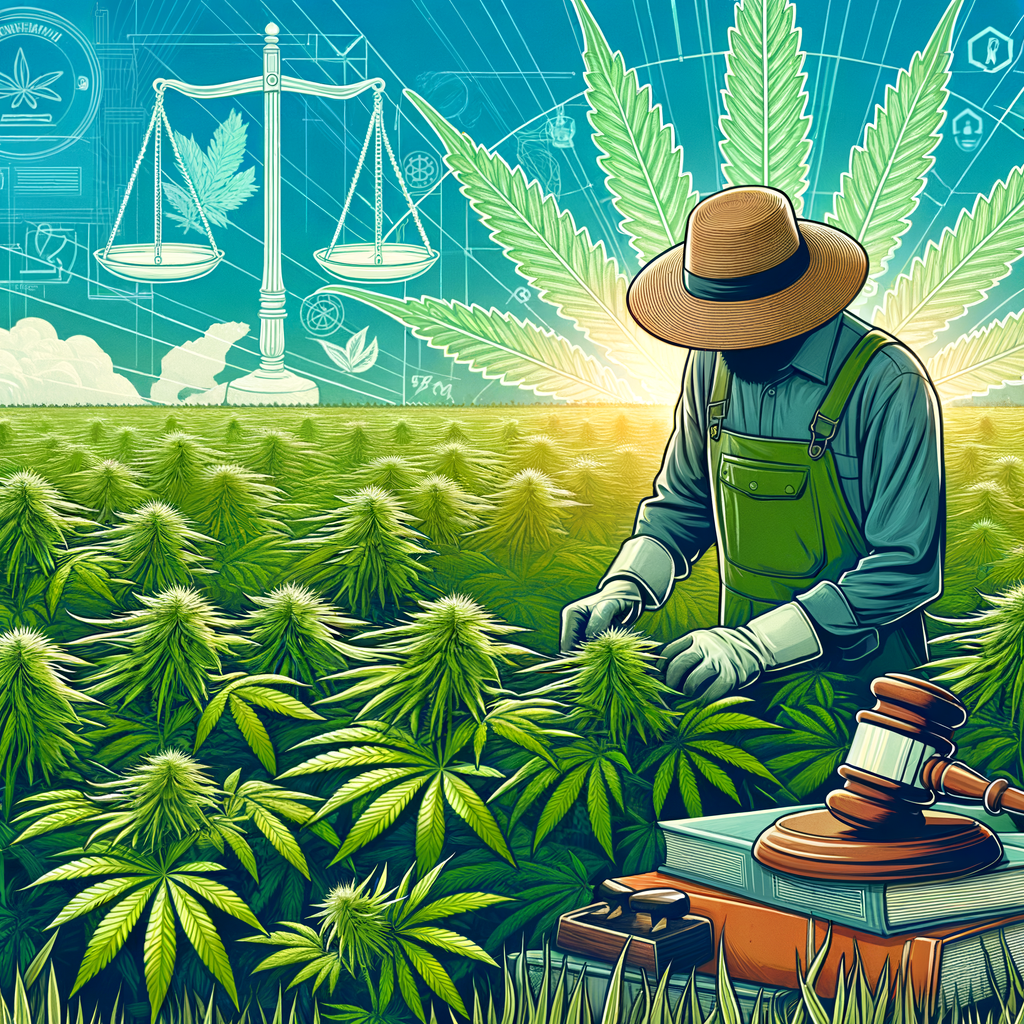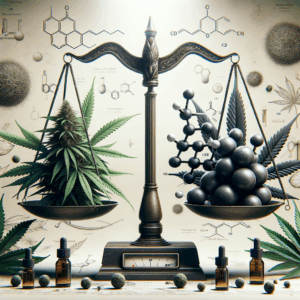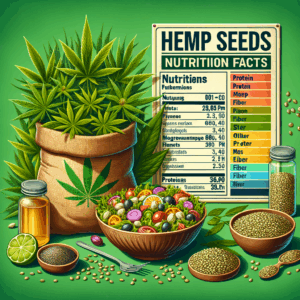
How to Grow Hemp Legally: Must-Have Tips for Success
- Understanding the Legal Landscape of Hemp Growth
- Selecting the Right Strain for Your Needs
- Preparing Your Land for Hemp Cultivation
- Mastering Planting Techniques
- Implementing Effective Irrigation Strategies
- Pest and Weed Management Strategies
- Harvesting Your Hemp Crop
- Post-Harvest Processing and Storage
- Building Your Market Strategy
- Frequently Asked Questions (FAQs)
- 1. Is growing hemp legal everywhere in the U.S.?
- 2. What type of soil is best for growing hemp?
- 3. How much water does hemp need during growth?
- 4. Are there any specific pests that commonly affect hemp crops?
- 5. How can I test the THC levels in my hemp crop?
- 6. What is the best time to harvest hemp?
- 7. Do I need a license to grow hemp?
- 8. Can I use my hemp for multiple products?
- 9. How should I store harvested hemp?
- 10. Where can I find more resources on hemp cultivation?
- References
Understanding the Legal Landscape of Hemp Growth
Growing hemp legally starts with understanding the laws that govern its production. In many countries, including the United States, hemp is considered a legal crop due to its low THC (tetrahydrocannabinol) content, which is less than 0.3%. This classification differentiates it from marijuana, allowing farmers to cultivate hemp under specific regulations.
To begin, you must conduct thorough research. Familiarize yourself with federal, state, and local laws. Each state in the U.S. may have its own set of rules for hemp cultivation, storage, and distribution. Ensure you understand the licensing requirements and any local zoning regulations that may apply to your farming land.
Moreover, keep up with changes in legislation. The hemp industry is evolving rapidly. Staying informed about new laws and regulations can help you avoid potential pitfalls. It’s a good idea to join local farming associations or networks that focus on hemp. These organizations often provide valuable resources, including updates on legal changes and best practices in the industry.
Selecting the Right Strain for Your Needs
After understanding the legal framework, the next step is selecting the right hemp strain. Different strains serve various purposes, including fiber production, seed oil extraction, and CBD (cannabidiol) cultivation. Your choice of strain will influence your yield, growth conditions, and marketability.
Consider factors like climate, soil type, and irrigation availability when choosing your strain. For example, some strains thrive in humid conditions, while others prefer drier climates. Review agricultural guides or consult with experienced farmers to identify strains best suited for your region.
Finally, always source your seeds from reputable suppliers. Using certified seeds ensures that you’re cultivating legal strains and helps maintain the quality of your crop. A good seed supplier provides information on THC content and growth habits, aiding your decision-making process significantly.
Preparing Your Land for Hemp Cultivation
Preparing your land effectively is critical for a successful hemp crop. First, test your soil to determine its pH levels and nutrient content. Hemp thrives in well-drained soil with a pH of 6 to 7. If your soil lacks essential nutrients, consider adding organic matter or fertilizers to enrich it.
Next, assist drainage systems to avoid waterlogging, which can hinder plant growth. Use cover crops to prevent soil erosion and improve soil health. Additionally, a well-timed tilling process helps in creating a fine seedbed, allowing seeds to germinate efficiently.
Lastly, plan your planting layout. Proper spacing between plants contributes to healthy growth, reducing competition for sunlight and nutrients. Whether you decide to use rows or a more randomized planting pattern, consider the specific needs of the selected hemp strain.
Mastering Planting Techniques
When it comes to planting hemp, timing is key. Hemp generally prefers a window between May and June for planting. This timing aligns with ideal temperatures and minimizes the risk of frost damage. Monitor local weather patterns closely to ensure optimal planting conditions.
Choose between direct seeding or transplanting seedlings. Direct seeding often requires less labor and is more common among hemp farmers. However, transplanting can give you a head start, particularly in regions with a shorter growing season.
Regardless of the method you choose, keep a consistent watering routine. During germination, the seeds require moisture to sprout effectively. Avoid over-watering, which can lead to root rot and other severe issues.
Implementing Effective Irrigation Strategies
Irrigation plays a significant role in hemp farming. A well-planned irrigation strategy ensures your plants receive adequate water, promoting healthy growth. Hemp roots extend deep into the soil, so a good watering system helps encourage deep root development.
In drier areas, consider utilizing drip irrigation. This method delivers water directly to the plant roots while conserving water. Alternatively, sprinkler systems can also be effective, especially for larger plots of land.
Monitor the moisture levels of your soil regularly. You can use a soil moisture meter to gauge the needs of your plants better. Understanding when and how much to water can make a fundamental difference in your hemp crop’s success.
Pest and Weed Management Strategies
Managing pests and weeds is crucial for cultivating hemp legally and successfully. Begin by implementing an integrated pest management (IPM) strategy. This approach allows you to monitor pest populations and take action only when necessary.
Start by maintaining a clean growing area. Remove debris and weeds that may harbor pests. Regular crop rotation can disrupt pest life cycles and promote healthier soil. Also, consider using companion planting techniques. Certain plants can repel pests or attract beneficial insects, creating a more balanced ecosystem around your crop.
If you encounter a pest problem, utilize organic methods whenever possible. Look for natural pesticides that won’t harm the environment or your crop’s quality. Always seek to identify the pest accurately before applying any treatment.
Harvesting Your Hemp Crop
Harvesting is another critical phase of hemp cultivation. Timing your harvest correctly ensures you maximize yields and the quality of your product. Monitor your plants closely as they approach maturity. For fiber production, the plants should be harvested before they begin to flower. For CBD crops, harvest when the trichomes (small resin glands) on the buds start to turn milky white.
Gather the right equipment for your harvest. Depending on the scale of your operation, you may need a combine harvester or hand tools for smaller plots. Always follow best practices for handling your plants post-harvest to maintain quality.
After harvesting, plan your drying and curing methods. Proper drying is vital to prevent moldy or spoiled products. Ensure sufficient air circulation as you dry your hemp. The right methods enhance your finished product and market value.
Post-Harvest Processing and Storage
After harvesting, you’ll need to process and store your hemp correctly. Processing varies significantly based on what you plan to do with the crop—be it fiber, seeds, or CBD oil. For fibers, you’ll need to decorticate the plants, separating the fiber from the stalk.
For CBD, use extraction methods like CO2 or ethanol extraction. These methods effectively isolate cannabinoids from the plant material. Research your chosen technique to understand best practices and necessary equipment.
Finally, proper storage ensures the longevity of your hemp products. Keep the raw materials in cool, dark spaces to maintain quality. Utilize vacuum-sealed bags or airtight containers to prevent moisture and contamination. Both practices can greatly benefit the shelf life and effectiveness of your products.
Building Your Market Strategy
Once you’ve harvested and processed your hemp, you’ll want to focus on building a strong market strategy. Understand your target audience—whether they are consumers looking for CBD products, textile manufacturers, or food suppliers. This knowledge will shape your branding, packaging, and promotional strategies.
Additionally, stay updated on market trends. The hemp industry is dynamic; being adaptable can create new opportunities. Consider attending trade shows or networking events to connect with other professionals in the field. These events can provide insights, partnerships, and strategies to improve your market reach.
Utilize social media and online platforms to promote your hemp products. Developing an online presence enhances visibility and generates interest. Showcase your journey from planting to processing. By sharing authentic experiences, you build trust and encourage potential customers to engage with your brand.
Frequently Asked Questions (FAQs)
1. Is growing hemp legal everywhere in the U.S.?
No, not all states have legalized hemp cultivation. Always check state regulations before starting your hemp farm.
2. What type of soil is best for growing hemp?
Hemp prefers well-draining, loamy soil with a pH level between 6 and 7 for optimal growth.
3. How much water does hemp need during growth?
Hemp requires about 20 to 30 inches of water annually, with varying needs based on the growth stage and local climate.
4. Are there any specific pests that commonly affect hemp crops?
Common pests include aphids, spider mites, and grasshoppers. Integrated pest management can help manage these threats effectively.
5. How can I test the THC levels in my hemp crop?
You can send samples to certified labs that specialize in cannabinoid testing to determine the THC content accurately.
6. What is the best time to harvest hemp?
Harvesting should generally occur when the plants begin to flower for fiber or when trichomes turn milky white for CBD.
7. Do I need a license to grow hemp?
Yes, you typically need a license or permit regulated by your specific state. Always check local laws.
8. Can I use my hemp for multiple products?
Yes, hemp can be utilized for various products, including fiber, seeds, and CBD extracts, depending on how you process it.
9. How should I store harvested hemp?
Store harvested hemp in a cool, dark location using airtight containers to maintain quality and prevent moisture damage.
10. Where can I find more resources on hemp cultivation?
Organizations like the National Hemp Association and state agricultural extensions offer valuable resources and guidance for hemp cultivation.
—
References
1. National Hemp Association. nationalhempassociation.org
2. U.S. Department of Agriculture. usda.gov
3. Penn State Extension. extension.psu.edu
4. Colorado State University Extension. csu.edu

